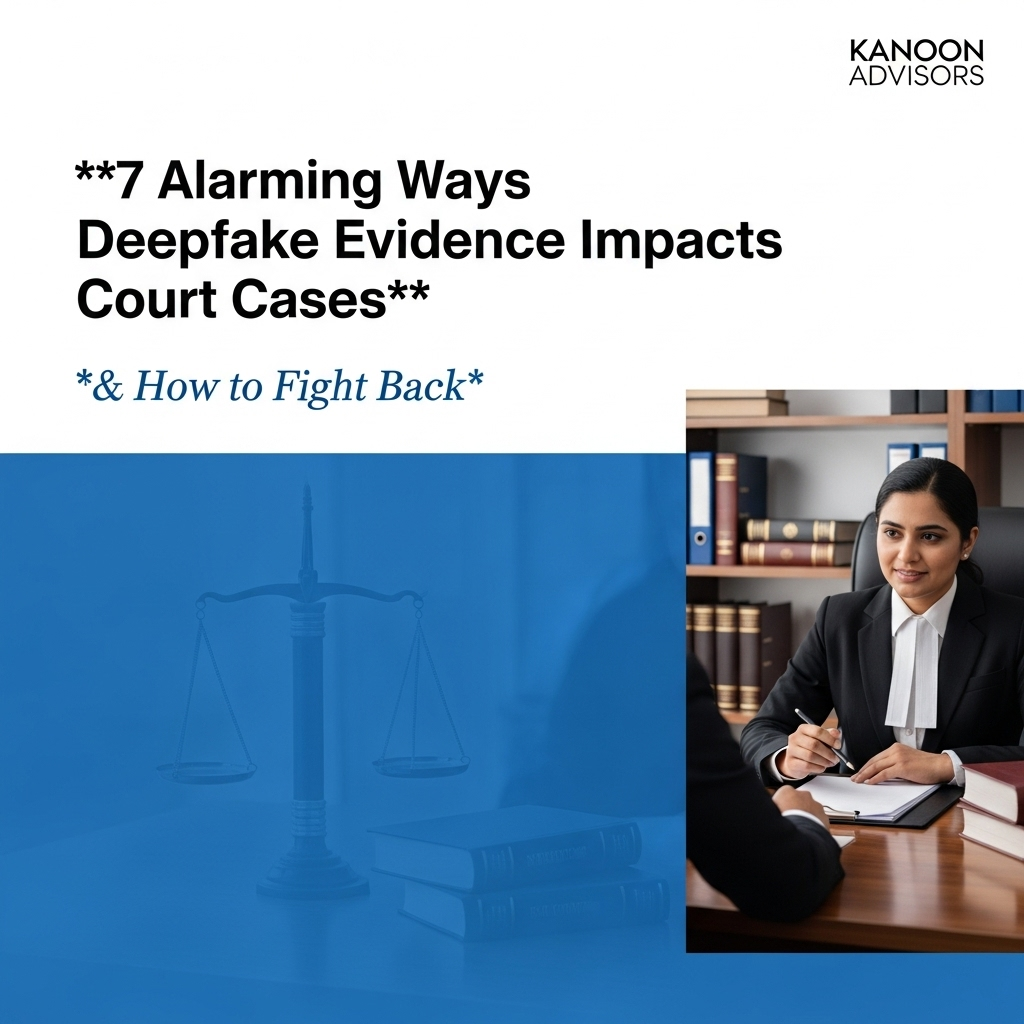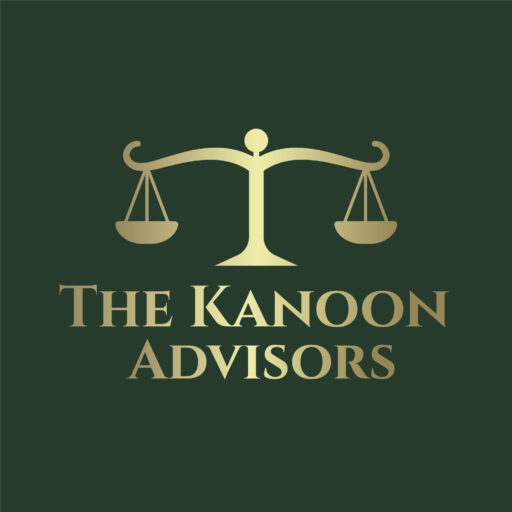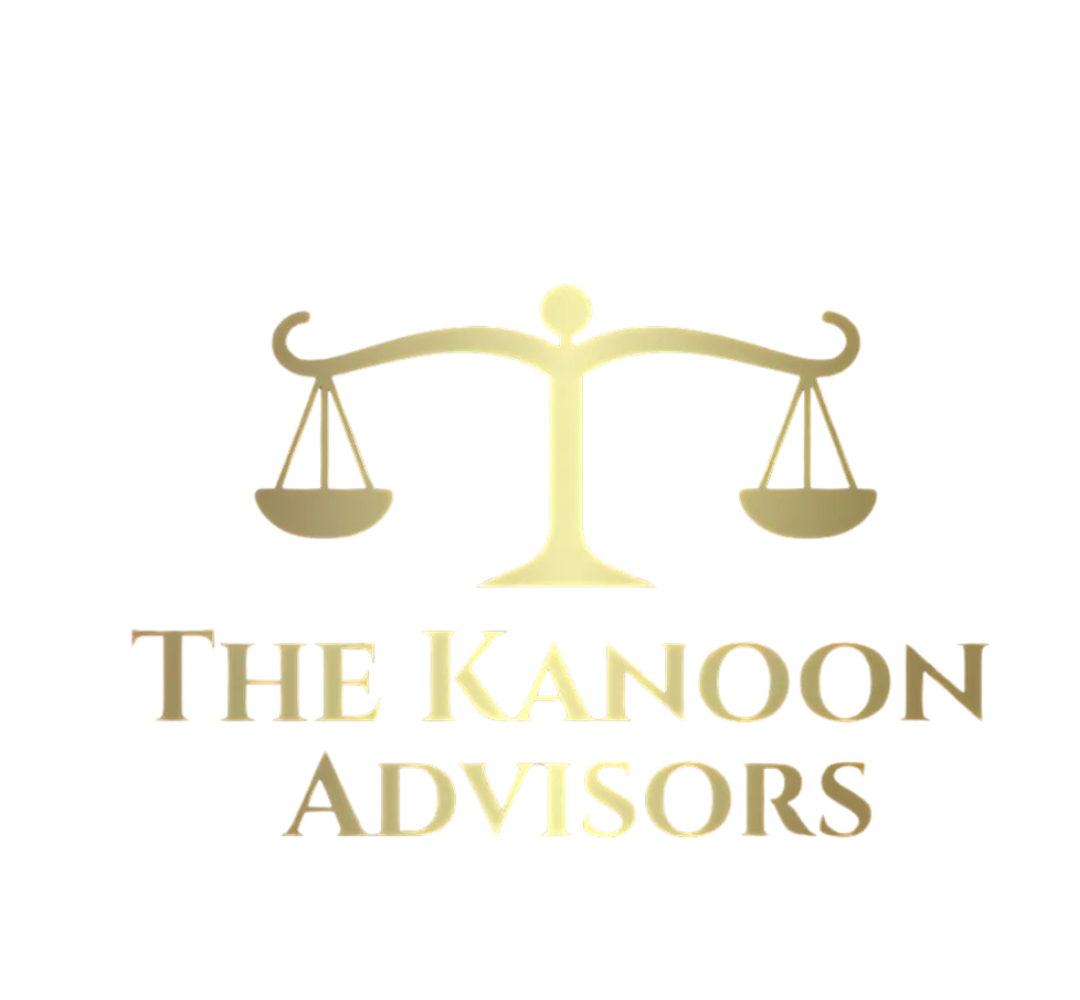
7 Alarming Ways Deepfake Evidence Impacts Court Cases & How to Fight Back
Quick Answer
Deepfake evidence in court presents significant challenges to the Indian legal system. According to legal data, digital evidence submissions have increased by over 70% in the last five years, with a growing percentage being AI-generated. To combat this, you must: 1. Verify the evidence’s authenticity through forensic experts. 2. Challenge its admissibility under Section 65B. 3. Present strong counter-evidence.
- Verify the evidence’s authenticity through forensic experts.
- Challenge its admissibility under Section 65B of the Evidence Act.
- Present strong counter-evidence to create reasonable doubt.
Table of Contents
- Introduction: The New Age of Digital Deception in Law
- India’s Legal Framework for Digital Evidence: A Double-Edged Sword
- 7 Critical Challenges Deepfake Evidence Poses in Court
- Strategic Legal Defences Against Deepfake Evidence in Delhi NCR Courts
- The Indispensable Role of Forensic Science in Unmasking Deepfakes
- The Kanoon Advisors Advantage in Digital Evidence Cases
- Related Legal Services
- Frequently Asked Questions
- Conclusion: Navigating the Future of Evidence with Expert Guidance
Introduction: The New Age of Digital Deception in Law
The Indian judicial system, built on the bedrock of truth and verifiable evidence, is facing an unprecedented challenge: the rise of deepfake technology. Artificial intelligence can now create hyper-realistic videos and audio recordings that can falsely incriminate an individual in a crime, fabricate evidence in a contentious divorce, or create fraudulent business communications. This technological advancement presents a formidable threat to the very essence of justice. For litigants and legal professionals across Delhi NCR, understanding the complexities of deepfake evidence in court is no longer a futuristic concern—it is a present-day reality that demands immediate and expert legal strategy. At The Kanoon Advisors, our 40+ years of combined experience have taught us that the nature of evidence evolves, but the principles of justice must remain steadfast. This guide provides a comprehensive overview of the legal challenges and strategic defences related to AI-generated evidence in Indian courts.
India’s Legal Framework for Digital Evidence: A Double-Edged Sword
While India does not yet have a specific “deepfake law,” the existing legal framework for electronic evidence provides the primary battleground for challenging such fabrications. The admissibility and validity of any digital evidence, including suspected deepfakes, are governed by two key pieces of legislation.
What is the role of the Indian Evidence Act, 1872?
The cornerstone for admitting electronic records in court is Section 65B of the Indian Evidence Act. This provision mandates that for any electronic evidence (like a video file, audio clip, or email) to be admissible, it must be accompanied by a certificate. This certificate must identify the electronic record, describe the manner of its production, and certify that the computer or device that produced it was functioning properly. The Supreme Court of India, in the landmark case of Arjun Panditrao Khotkar v. Kailash Kushanrao Gorantyal & Ors., has definitively ruled that compliance with Section 65B is a mandatory pre-requisite for the admissibility of electronic evidence. This ruling provides a powerful first line of defence against unverified digital media. You can review the judgment guidelines on the Supreme Court of India website.
How does the Information Technology Act, 2000 apply?
The IT Act, 2000, provides legal recognition for transactions carried out through electronic means. Section 4 of the Act grants legal validity to electronic records, making them equivalent to traditional paper-based documents. However, this recognition comes with the expectation of integrity and authenticity. For deepfakes, provisions of the IT Act related to identity theft (Section 66C) and cheating by personation (Section 66D) can be invoked in separate criminal proceedings against the creator of the fabricated evidence. This parallel legal action can strengthen the challenge against the evidence’s validity in the primary case.
7 Critical Challenges Deepfake Evidence Poses in Court
Navigating a case involving a suspected deepfake is fraught with unique legal and technical hurdles. Our experience at The Kanoon Advisors in Delhi NCR courts highlights these seven critical challenges:
1. Proving Authenticity and Admissibility
Meeting the Section 65B requirement is only the first step (admissibility). The real battle is proving the content’s authenticity. A technically correct 65B certificate can be produced for a deepfake file. The court must then be convinced that the content itself is a fabrication, which requires moving beyond procedural checks into deep forensic analysis.
2. The Shifting Burden of Proof
Legally, the person submitting the evidence (the proponent) has the burden to prove its authenticity. However, in practice, the moment a seemingly damning video is presented, the psychological burden often shifts to the accused to prove it’s a fake. This reversal can be prejudicial and requires an aggressive legal strategy to re-establish the correct legal burden.
3. Scarcity and Cost of Forensic Expertise
According to court statistics, the demand for digital forensic experts has outpaced supply by nearly 40% in metropolitan courts. Finding a qualified, court-admissible expert to analyze digital media for signs of AI manipulation is difficult and expensive. This financial barrier can put an individual litigant at a significant disadvantage.
4. The “Liar’s Dividend”
This is a dangerous psychological phenomenon where the mere existence of deepfake technology can be used to discredit genuine evidence. A guilty party can falsely claim that a real video or audio recording is a deepfake, creating confusion and reasonable doubt where none should exist. This tactic complicates the fact-finding process for the judiciary.
5. Judicial Awareness and Precedent
Indian courts are highly capable, but the technology is evolving faster than legal precedents are being set. There is a learning curve for judges, prosecutors, and defence lawyers in understanding the technical nuances of deepfake detection. An effective legal team must be able to educate the court on the technology in a clear, concise, and legally relevant manner.
6. Procedural Delays
Challenging digital evidence is not a quick process. It involves filing specific applications, getting court orders for forensic analysis, waiting for reports from labs (like the FSL), and then examining and cross-examining experts. These steps can add months, if not years, to the litigation timeline.
7. Chain of Custody Issues
For any evidence to be reliable, its chain of custody—the chronological documentation of its handling—must be intact. For digital files, which can be easily copied and altered, proving an unbroken and untampered chain of custody from the source device to the court is exceptionally difficult and a key area for legal challenges.
Strategic Legal Defences Against Deepfake Evidence in Delhi NCR Courts
If you are confronted with what you believe is deepfake evidence, a passive defence is not an option. A proactive and multi-pronged legal attack is essential. As experienced criminal law practitioners, the team at The Kanoon Advisors employs a robust, step-by-step process to dismantle fraudulent digital evidence.
How to Systematically Challenge AI-Generated Evidence
Step-by-Step Legal Process
- Step 1: Immediate Objection to Admissibility: The very first step is to raise an immediate and formal objection to the evidence being taken on record. This objection should be based on non-compliance with Section 65B of the Indian Evidence Act, questioning the validity of the certificate or the absence thereof.
- Step 2: File a Specific Application for Examination: Your lawyer must file a detailed application before the court, praying for the suspected deepfake to be examined by an independent forensic expert. This application should lay out the specific reasons for suspecting fabrication (e.g., unnatural speech, visual artifacts, lack of source verification).
- Step 3: Scrutinize the Source Device and Metadata: We demand the production of the original device on which the recording was allegedly made. An analysis of the device and the file’s metadata (information about the file’s creation and modification) by an expert can often reveal inconsistencies that prove manipulation.
- Step 4: Engage a Private Forensic Expert: Do not rely solely on government-run forensic labs (FSL), which are often overburdened. Engaging a reputable private digital forensic expert to conduct an independent analysis is crucial. Their report can be submitted as expert evidence under Section 45 of the Evidence Act.
- Step 5: Rigorous Cross-Examination: A key part of the defence is the cross-examination of the witness who has presented the evidence. Questions should focus on the origin of the file, the chain of custody, and their technical knowledge of the recording. Similarly, any expert produced by the opposition must be cross-examined on their methodology and findings. Our team of seasoned litigators excels at this critical stage.
- Step 6: Present Counter-Evidence: A strong defence involves not just disproving their evidence but also proving your own narrative. This could include alibi witnesses, location data (e.g., mobile tower location), or other documentary evidence that contradicts the events depicted in the deepfake. A skilled criminal lawyer can help build this counter-narrative effectively.
The Indispensable Role of Forensic Science in Unmasking Deepfakes
Legal arguments alone are insufficient. The fight against deepfakes is won at the intersection of law and technology. Understanding the role of forensic science is vital for any litigant.
What technical methods do forensic experts use to detect deepfakes?
Forensic experts do not rely on guesswork. They use sophisticated tools and methodologies to detect AI manipulation. These include:
- Digital Artifact Analysis: Looking for subtle visual flaws that AI models often leave behind, such as unnatural lighting, strange blinks, pixel inconsistencies, or soft edges around the face.
- Audio Spectrum Analysis: Analyzing the audio track for signs of synthesis, unnatural cadence, or a mismatch between the sounds and the visual environment.
- Metadata and Hash Value Analysis: Examining the file’s underlying data to see when it was created, modified, and with what software. The file’s hash value (a unique digital fingerprint) can be compared to the original, if available, to prove alteration.
- AI-Powered Detection Tools: Using advanced software that is trained to recognize the patterns and signatures of AI-generated content, often with a high degree of accuracy.
Why is an expert witness crucial for your case?
A forensic report is just a document. Its power lies in the testimony of the expert who created it. An expert witness translates complex technical findings into a language that judges and lawyers can understand. They explain the “how” and “why” behind their conclusion that a file is manipulated, and they must withstand rigorous cross-examination. Selecting a credible and articulate expert is one of the most critical decisions in defending against deepfake evidence.
The Kanoon Advisors Advantage in Digital Evidence Cases
With over 40 years of combined legal experience and a track record of over 500 successful cases, The Kanoon Advisors is a trusted law firm serving clients across Delhi NCR, including Gurgaon, Delhi, Faridabad, and Noida. Founded by the venerable Shri Gokal Chand Yadav and led by Partner Vishal Yadav, a litigator known for securing landmark judgments, our expertise spans criminal law, family disputes, and complex financial matters. Our 95% client satisfaction rate is a testament to our commitment. We possess the necessary experience to handle cases involving complex digital evidence, combining rigorous legal strategy with access to top-tier technical experts. We practice before the Supreme Court, Delhi High Court, Punjab & Haryana High Court, and all District Courts in the region, ensuring seamless representation at every level of the judiciary.
Related Legal Services
Frequently Asked Questions
Q1: What is the first step if I suspect deepfake evidence is being used against me?
The first step is to not panic and immediately consult an experienced criminal lawyer. Do not admit to anything related to the evidence. Your lawyer will advise you to formally object to its admissibility in court and file an application for forensic examination of the electronic record at the earliest opportunity.
Q2: Is a Section 65B certificate enough to prove a deepfake is real?
No. A Section 65B certificate only addresses the admissibility of the electronic record, not its authenticity or truthfulness. It is merely a procedural requirement. The content of the evidence can still be challenged and must be proved to be genuine through other means, including forensic analysis and witness testimony.
Q3: How much does a forensic analysis for deepfakes cost in India?
The cost can vary significantly based on the complexity of the file, the reputation of the expert, and the urgency. It can range from ₹50,000 to several lakhs. While government FSLs are an option, they often have long backlogs, making private experts a more practical, albeit costlier, choice for timely justice.
Q4: Can I file a separate criminal case for the creation of deepfake evidence?
Yes. You can initiate separate criminal proceedings against the person who created and/or submitted the fake evidence. This can be done under various sections of the Indian Penal Code (IPC) for forgery (Sec 465), defamation (Sec 499), and presenting false evidence (Sec 193), as well as under the IT Act.
Q5: What are the penalties for submitting false evidence in court?
Under Section 193 of the IPC, intentionally giving or fabricating false evidence for use in a judicial proceeding is a serious offence, punishable with imprisonment which may extend to seven years, and also a fine. The courts take a very stern view of any attempts to mislead the judicial process.
Q6: How are courts in Delhi and Gurgaon handling AI evidence?
Courts in Delhi NCR are increasingly encountering AI-generated evidence. While there is no separate protocol, they are strictly enforcing the procedural requirements of the Evidence Act, particularly Section 65B. Judges are becoming more receptive to applications for forensic analysis and rely heavily on the reports and testimony of digital forensic experts to make informed decisions.
Legal Disclaimer
This information is provided for educational purposes only and does not constitute legal advice. Every legal situation is unique, and outcomes depend on specific facts and circumstances. Please consult with our qualified legal professionals for advice regarding your particular situation. Past results do not guarantee future outcomes.
Conclusion: Navigating the Future of Evidence with Expert Guidance
The emergence of deepfake evidence has undeniably complicated the legal landscape. It poses a profound threat to individuals, businesses, and the integrity of the justice system. However, the Indian legal framework, though not yet specifically tailored for AI, provides robust tools to fight back when wielded by a knowledgeable and strategic legal team. The principles of evidence—authenticity, integrity, and corroboration—remain the ultimate defence. The key is to act swiftly, challenge procedurally, attack technically through forensics, and build a compelling counter-narrative. In this new era of digital deception, your strongest asset is an experienced legal advisor who understands both the law and the technology shaping its future.
Need expert legal assistance? Our experienced team provides comprehensive legal services to help clients across Delhi NCR navigate complex legal challenges involving digital evidence. Contact our experienced legal team today for a consultation tailored to your specific needs.


